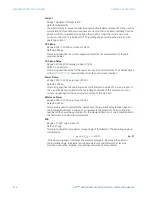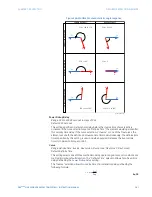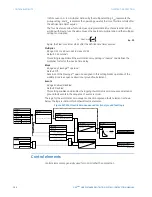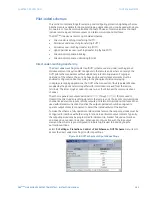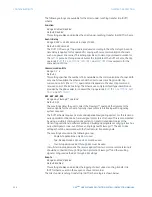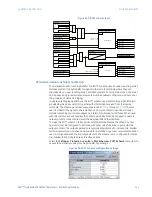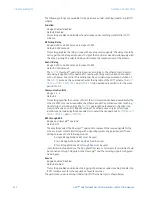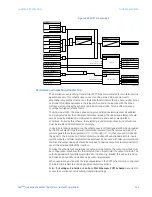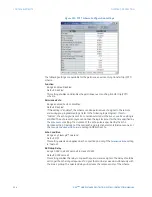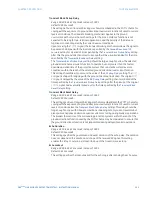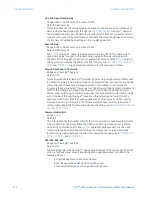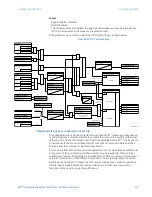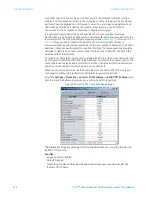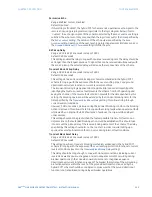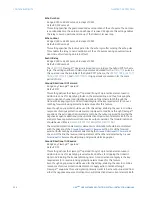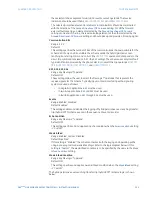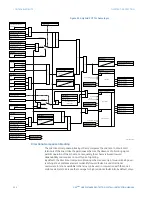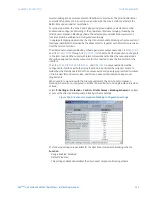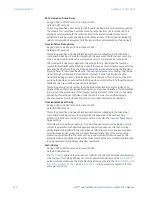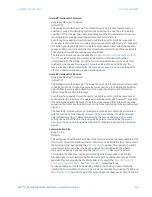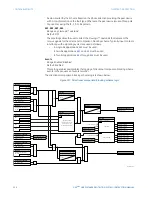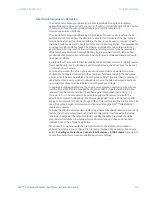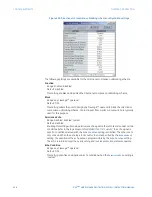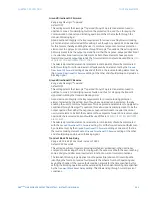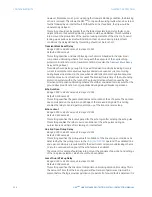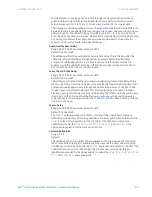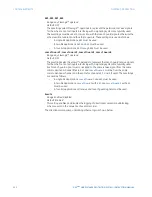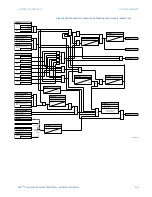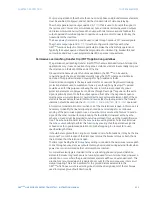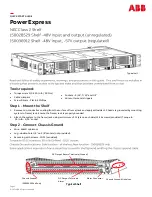
300
D90
PLUS
LINE DISTANCE PROTECTION SYSTEM – INSTRUCTION MANUAL
CONTROL ELEMENTS
CHAPTER 7: PROTECTION
Echo Duration
Range: 0.000 to 65.535 seconds in steps of 0.001
Default: 0.100 seconds
This setting specifies the guaranteed and exact duration of the echo pulse. The duration
is not dependent on the duration and shape of received RX signals. This setting enables
the relay to avoid a permanent lock-up of the transmit-receive loop.
Echo Lockout
Range: 0.000 to 65.535 seconds in steps of 0.001
Default: 0.250 seconds
This setting specifies the lockout period for the echo logic after sending the echo pulse.
This enables the relay to avoid oscillations of the echo pulses during an autoreclosure
dead-time after clearing an internal fault.
Seal-In Delay
Range: 0.000 to 65.535 seconds in steps of 0.001
Default: 0.000 seconds
The
HYB POTT OP
FlexLogic™ operand is produced according to the hybrid POTT scheme
logic. This setting specifies a minimum guaranteed duration for the
HYB POTT OP
pulse. As
this operand runs the trip table of the hybrid POTT scheme, the
HYB POTT TRIP A
,
HYB POTT
TRIP B
,
HYB POTT TRIP C
, and
HYB POTT TRIP 3P
trip operands are sealed-in for the same
period of time.
Ground Directional OC Forward
Range: any FlexLogic™ operand
Default: OFF
This setting defines the FlexLogic™ operand (if any) of a protection element used in
addition to zone 2 for identifying faults on the protected line, and thus, for keying the
communication channel and initiating operation of the scheme (both through the
transient blocking logic). Good directional integrity is the key requirement for an over-
reaching forward-looking protection element used for this feature.
Even though any operand could be used for this setting, enabling the user to combine
responses of various protection elements or apply extra conditions through FlexLogic™
equations, this extra signal is primarily meant to be the output operand from either the
negative-sequence directional or neutral directional overcurrent elements. Both these
elements have separate forward and reverse output operands. The forward indication
should be used (that is,
NEG SEQ DIR OC1 FWD
or
NEUTRAL DIR OC1 FWD
).
The selected protection element (or elements in combination) should be coordinated
with the selection of the
Ground Directional OC Reverse
setting. For all the forward
external faults seen by an element selected by the
Ground Directional OC Forward
at
one end of the line, the reverse-looking element at the other end selected by
Ground
Directional OC Reverse
should pickup and provide a blocking signal.
Ground Directional OC Reverse
Range: any FlexLogic™ operand
Default: OFF
This setting defines the FlexLogic™ operand (if any) of a protection element used in
addition to zone 4 for identifying reverse faults, and thus, for stopping the transmit
signal and initiating the transient blocking timer. Good directional integrity is the key
requirement for a reverse-looking protection element used for this feature.
Even though any operand could be used for this setting, enabling the user to combine
responses of various protection elements or to apply extra conditions through
FlexLogic™ equations, this extra signal is primarily meant to be the output operand from
either the negative sequence directional or neutral directional overcurrent element. Both

